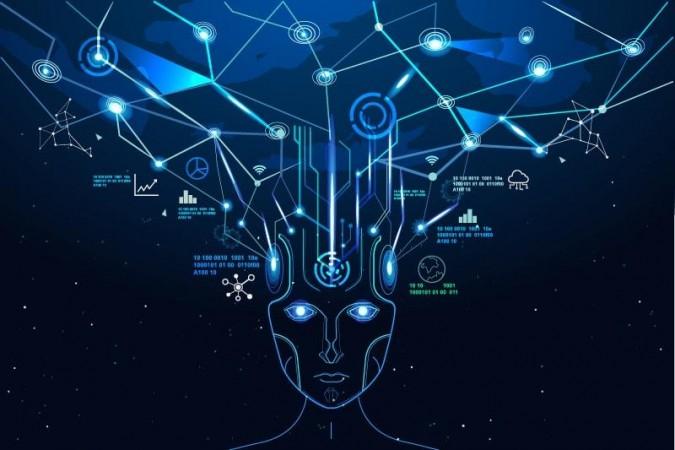
Over the past two days, global markets have been gripped by intensifying debate over whether the artificial intelligence boom is inching toward a historic bubble. The New York Times and Forbes both reported a surge in institutional anxiety as AI-related stocks soared to record valuations, with economists comparing the moment to the dot-com exuberance of 1999.
The IMF and Bank of England reiterated their October warnings that AI-fueled speculation now threatens financial stability, even as Wall Street analysts from JPMorgan to Deutsche Bank called it "a market of stretched optimism." Yahoo Finance disclosed that fund managers see an "AI equity bubble" as the top global risk, while Reuters noted that Japan's Fujikura and U.S. chipmakers are still racing to capitalize on data-center demand. Amid this cacophony of euphoria and caution, the world's largest firms, central banks, and investors are effectively asking the same question: has artificial intelligence crossed from innovation into intoxication ?
Artificial intelligence the miracle child of the digital era now stands at an inflection point between transformation and turbulence. Markets have been euphoric, CEOs visionary, and governments evangelical in their pursuit of an AI-powered future. Yet, as the global wave crests toward 2026, a growing chorus of economists, institutions, and investors is warning that an AI bubble akin to the dotcom frenzy is beginning to form, risking not only overvaluation but systemic distortion of capital, industry priorities, and even national strategies.
"We're at the euphoric phase of a potential bubble recognize it before gravity does," remarked Jamie Dimon, CEO of JPMorgan Chase, in early October 2025.
The Anatomy of an Inflating Dream
The scale of AI investment is staggering. CB Insights tracks more than 1,300 AI startups valued above $100 million, of which nearly 500 are unicorns. Global spending on AI is projected to touch $375 billion this year and $500 billion by 2026 figures unseen since the telecom buildout of the 1990s. The five largest tech firms Microsoft, Alphabet, Amazon, Meta, and Nvidia today command valuations exceeding the combined market capitalization of entire developed economies including Japan, Canada, and the UK.
The story feels familiar. As billions pour into data centers and chips, the sector's gravitational pull mirrors the capital misallocation once seen in telecom and real estate bubbles. Economist Paul Kedrosky notes that such concentration "sucks oxygen from the rest of the economy," with small manufacturers starved of affordable capital. History may be quietly repeating itself.
"Whenever capital converges on a single idea, innovation narrows and bubbles swell," wrote economist Nouriel Roubini.
The Warning Bells: Institutions Turn Wary
In the last quarter of 2025, mainstream institutions from the IMF to the Bank of England have voiced increasing concern over speculative excess. The IMF's *World Economic Outlook* warned that aggregate investment could fall sharply if AI-driven expectations disappoint, given that data center expansion accounted for a major share of global fixed investment growth. The Bank of England's Financial Policy Committee echoed this sentiment, calling the risk of a "sharp market correction" both material and imminent.
Goldman Sachs and JPMorgan analysts now cite "hyper-concentrated tech portfolios" as a systemic vulnerability. Every turn resembles the late 1990s: exuberant startups, inflated valuations, and a belief that technology alone ensures infinite growth.
"The danger is not in AI itself but in believing it can't fail," cautioned Kristalina Georgieva of the IMF during her Tokyo address on October 10, 2025.
Hype, Reality, and the Plateau of Realization
The generative AI frenzy that began with ChatGPT in 2023 promised an overnight transformation of work. Yet, by 2025, adoption data suggests a slower climb. Only one in five workers globally uses generative AI regularly, and just over 5% of firms have fully integrated it into operations. Many enterprises remain in pilot mode, balancing potential value with governance and risk. In essence, AI's potential remains undisputed but the realization curve is catching up with human learning and corporate structure, not galloping ahead of it.
Most companies have discovered that "AI as a co-worker" is more feasible than "AI as a replacement." The next phase will be measured, procedural, and compliance-heavy more marathon than sprint.
"Progress is often mistaken for revolution; it's the patience that sustains it," observed Sam Altman of OpenAI.
Economic Ripples and Overextensions
AI-driven capital expenditure has propped up GDP figures in the U.S. and parts of Asia. According to Bank of America, AI investments contributed as much as 1.3 percentage points to global growth in mid-2025. Similarly, Apollo Global Management's Torsten Sløk argues that AI spending has "masked weakness elsewhere," offsetting trade-war headwinds and boosting consumption. Yet, this capex bonanza is also a double-edged sword: it amplifies market indices while concealing structural imbalances rising energy costs for data centers, hardware inflation, and growing inequality in access to compute resources.
If correction arrives, it may resemble more a slow deflation than a sudden crash shrinking valuations, consolidation of startups, and tighter liquidity cycles in venture capital.
"Every technology revolution begins with dreams, but it is discipline that decides who survives its dawn," noted Mohamed El-Erian of Allianz.
The Institutional Response: From Alarm to Adaptation
The IMF advocates calibrated monetary prudence tightening policy where speculative heat is evident, while preserving innovation-led growth. Similarly, OECD task forces have begun drafting recommendations for AI investment transparency and sustainable digital infrastructure. Analysts forecast that markets could realign by mid-2026, with overleveraged startups folding and resilient enterprises pivoting toward profit-based metrics rather than announcements or valuations.
Large corporations unlike under the dotcom bubble possess tangible revenue streams and existing platforms. Nevertheless, even giants like Nvidia and OpenAI face investor anxiety over whether their growth multiples are sustainable once saturation sets in.
"Smart money is shifting from hype to proof-of-utility," commented UBS strategist Anneka Treon.
What It Means for Economies and Industries
Beyond markets, a bubble's echo affects economies in complex ways. The AI infrastructure boom has inflated electricity demand, reshaping global energy markets. Nations like the U.S., China, and India are rethinking grid resilience and renewable offsets to feed power-hungry compute nodes. Manufacturing priorities are tilting toward semiconductors and GPUs, with traditional sectors textiles, manufacturing, logistics struggling for investment capital.
If the AI tide turns, capital retreat could spark global slowdowns, particularly in economies reliant on data-center exports or chip fabrication. Furthermore, skill asymmetry could widen between digital elites and non-AI economies, deepening global inequality.
"Technological inequality will soon matter as much as income inequality," wrote historian Yuval Noah Harari in *The Economist*'s October 2025 issue.
AI Bubble and the Indian Equation
For India, the AI moment is both promise and predicament. The government's *IndiaAI Mission*, endowed with Rs. 10,000 crore, seeks to cultivate a sovereign AI ecosystem based on inclusivity, responsible governance, and ethical deployment. The initiative anchors seven pillars data access, compute infrastructure, start-up enablement, and AI in healthcare and agriculture. With the Digital Personal Data Protection (DPDP) Act and forthcoming National Committee on Responsible AI, India aims to insulate itself from speculative fervor while leveraging transformative capability.
The Indian corporate sector, meanwhile, faces a different imperative: to convert AI rhetoric into sectoral modernization. Financial institutions, retail, and manufacturing firms are urged to pursue measured adoption, ensuring financial prudence and real productivity gains rather than symbolic AI projects.
"India's edge lies in responsibility an AI ecosystem built on trust, scale, and constraint," said Rajeev Chandrasekhar, Minister of State for Electronics and IT, during the Bengaluru Tech Summit.
Strategic Choices for Corporate India
Strategically, Indian corporates must now navigate between enthusiasm and excess. Three avenues emerge for considered response:
- Construct AI Foundations, Not Fortresses: Build interoperable, domain-specific AI frameworks rather than all-encompassing platforms. Focus on indigenous data quality and fine-tuned models for financial, healthcare, or energy applications.
- Prioritize Human+AI Talent Models: Invest in re-skilling mid-career professionals and integrating AI supervision roles amplifying workforce adaptability to prevent overdependence on algorithmic decision-making.
- Institutionalize AI Governance: Establish board-level oversight of AI ethics, bias, and explainability frameworks, mirroring the mature audit standards seen in cybersecurity or ESG compliance.
Such steps ensure that Indian enterprise becomes a counter-narrative to blind speculation a slow-burning model of scalable resilience.
"We must build AI for longevity, not headlines," emphasized Nandan Nilekani at the IndiaAI Forum 2025.
Dream, Discipline, and the Dawn Ahead
The world stands torn between the dream of AI omnipresence and the emerging realism that no revolution escapes the laws of markets or physics. Like the railroads of the 19th century or the internet's early days, AI is indispensable but not immune to correction. The coming two years may thus define whether AI becomes the engine of sustainable modernization or another milestone in humanity's cycle of overreach.
If capital rebalances, what remains could be not ruin but renewal a tempered, transparent, human-centered AI era driven less by hype and more by enduring purpose. For India, this is an opportunity to ascend as a model of balanced AI nationalism: pragmatic, equitable, and globally responsive.
"History's greatest leaps are made by those who dream with restraint," wrote author Henry Kissinger in his final reflective essay on technology's destiny an insight the AI age would do well to remember.
[Major General Dr Dilawar Singh is an Indian Army veteran who has led the Indian Army's Financial Management, training and research divisions introducing numerous initiatives therein. He is the Senior Vice President of the Global Economist Forum AO ECOSOC, United Nations and The Co President of the Global Development Bank.]









